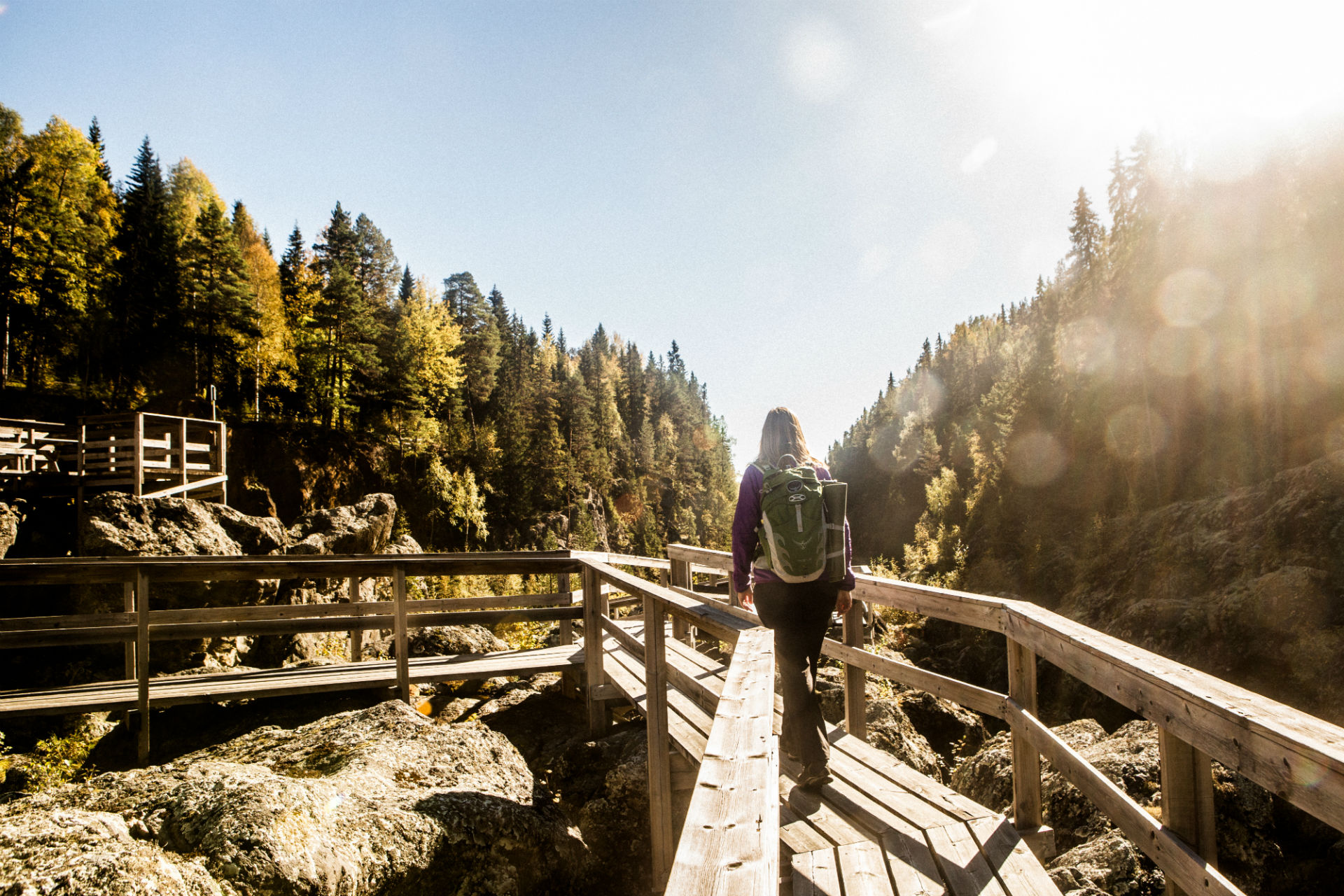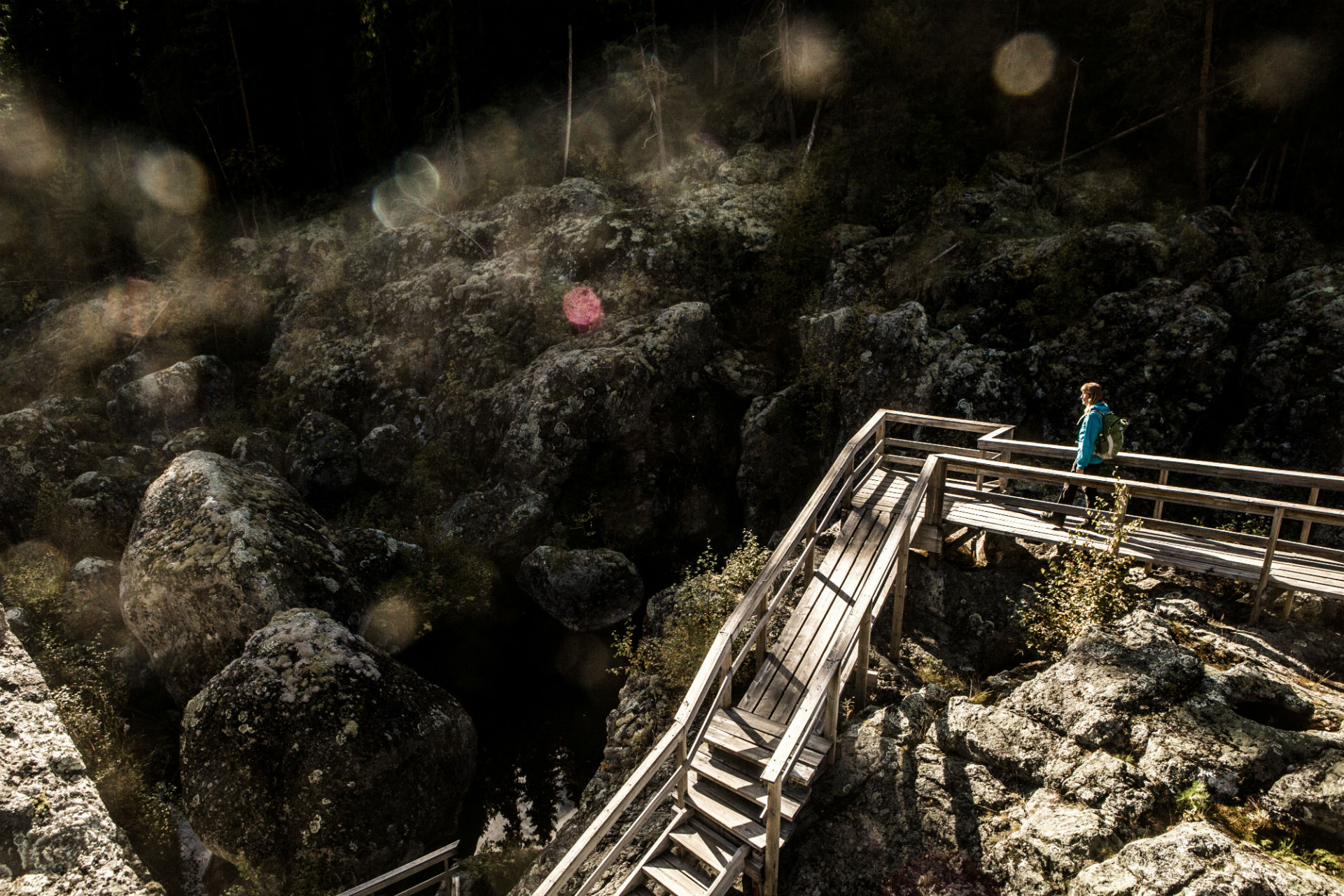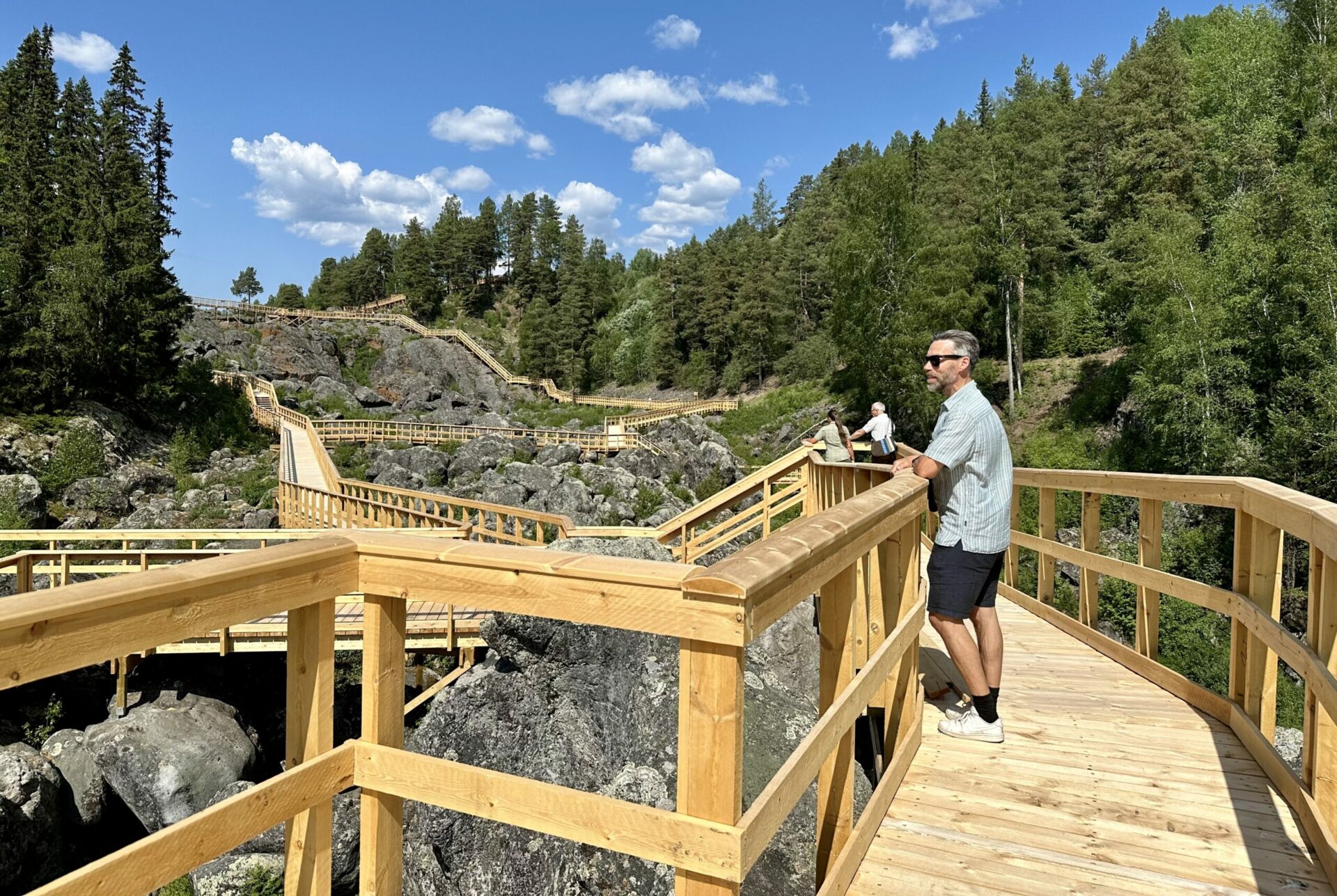HERE’S THE SKINNY
ACTIVITY
Hiking, nature, culture. Accesible even with a wheelchair thanks to the wooden walkways.
SEASON
Spring, summer and autumn. Restaurant/café open in the summer.
START
Turn off road no 87 between Hammarstrand and Bispgården. Follow the signs to the large parking lot and walk from there.
ACCESSIBILITY
Hike on wooden walkways to explore the dead falls. There are several picnic areas, one with a roof. The first part of the walkways is made accessible for wheelchairs, prams and walkers. Further down along the emptied riverbed there are stairs and a nature path leads into the forest and over the ridge to the new riverbed. This path is quite steep on the other side of the ridge.
GUIDED TOURS
There are guided tours for booked groups. There are also guided canoe trips along the Indals river (Indalsälven).
WHERE TO EAT & STAY
The Cafeteria is open from May to August serving coffee, ice cream and lunches. There are hotels, cabins and hostels nearby.
NATURE RESERVE
The area around Döda fallet is a nature reserve with cultural history and nature worth protecting with unique geological formations. In the area there is also an old mine shaft and a 5 300 year old sleigh has been found here. The site is a part of the official Geo Park that encompasses the whole community along the river Indalsälven in Ragunda.
BOTANIC
In spite the small size of the nature reserve there are lots of botanic treasures. There are 150 species of moss east of the fall. And there are rare lichens like the Ramalina Thrausta and vascular plants like Impatiens Noli-Tangere.
SCIENCE
Professor Gerhard De Geer used the empty lake Ragunda with the layers of sediment to study the growth of the landscape from the end of the ice age. In the beginning of the 20th century he managed to date the ending of the last ice age and determined it was 12-13 000 years ago in this area instead of the former belief that it was 10 000 years ago.
DO NOT MISS
The remarkable area by the dead falls invites to contemplation. Take your time and enjoy the peace by the boulders, the giant pot holes and deep dark green pools mirroring the surrounding tree tops.
Dödafallet.se
ARE WE MISSING SOMETHING?
Suggest an edit















